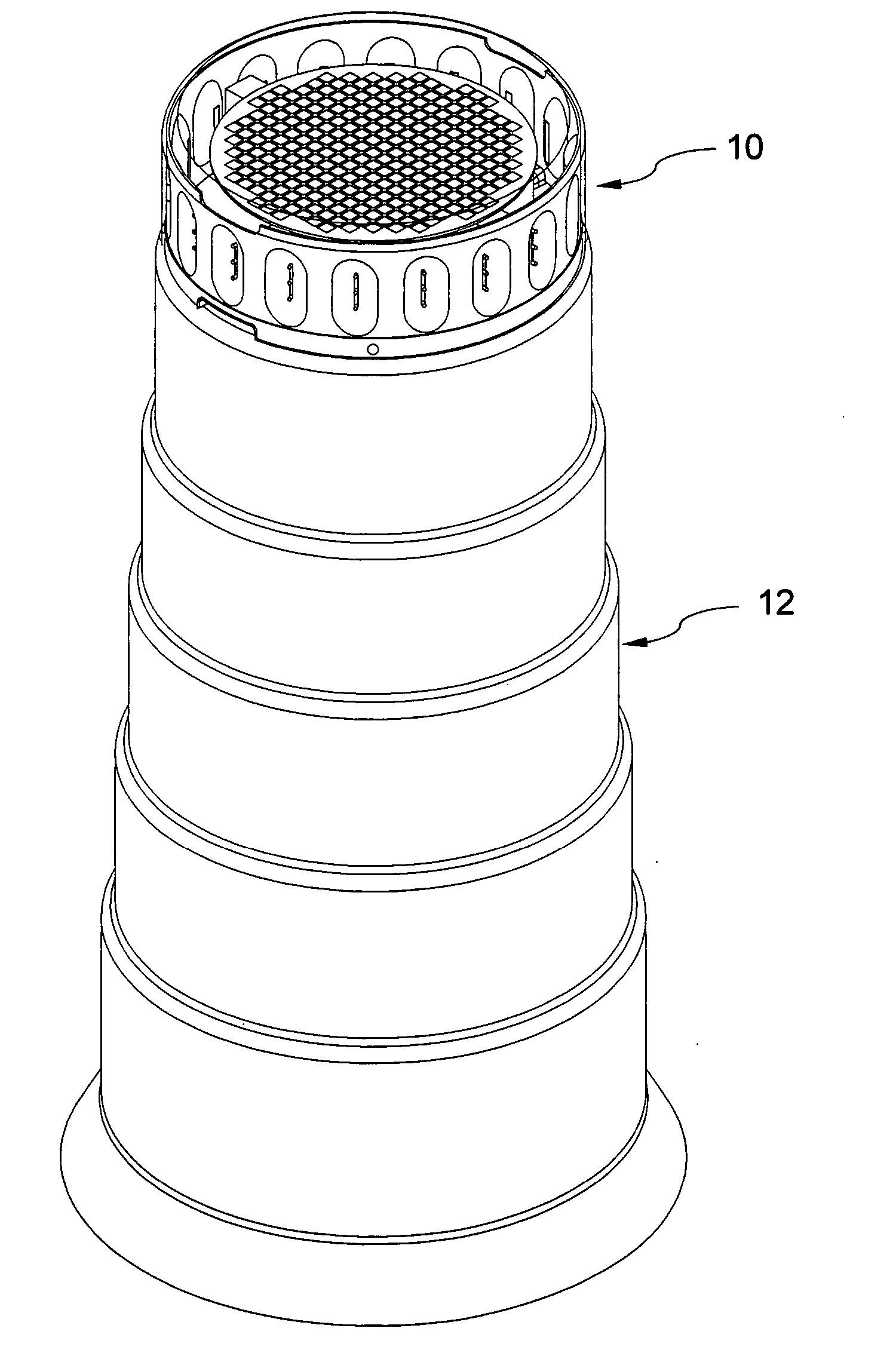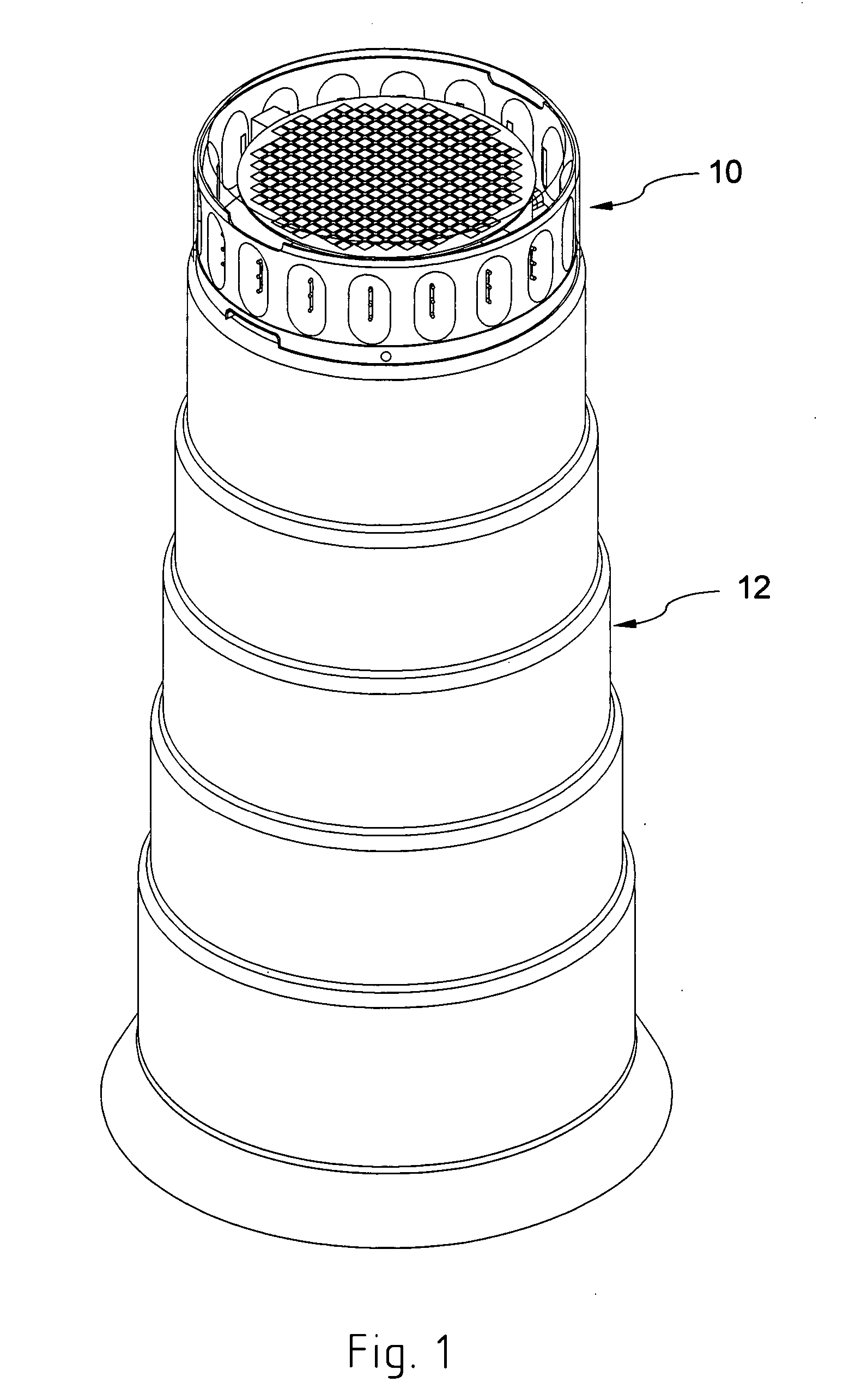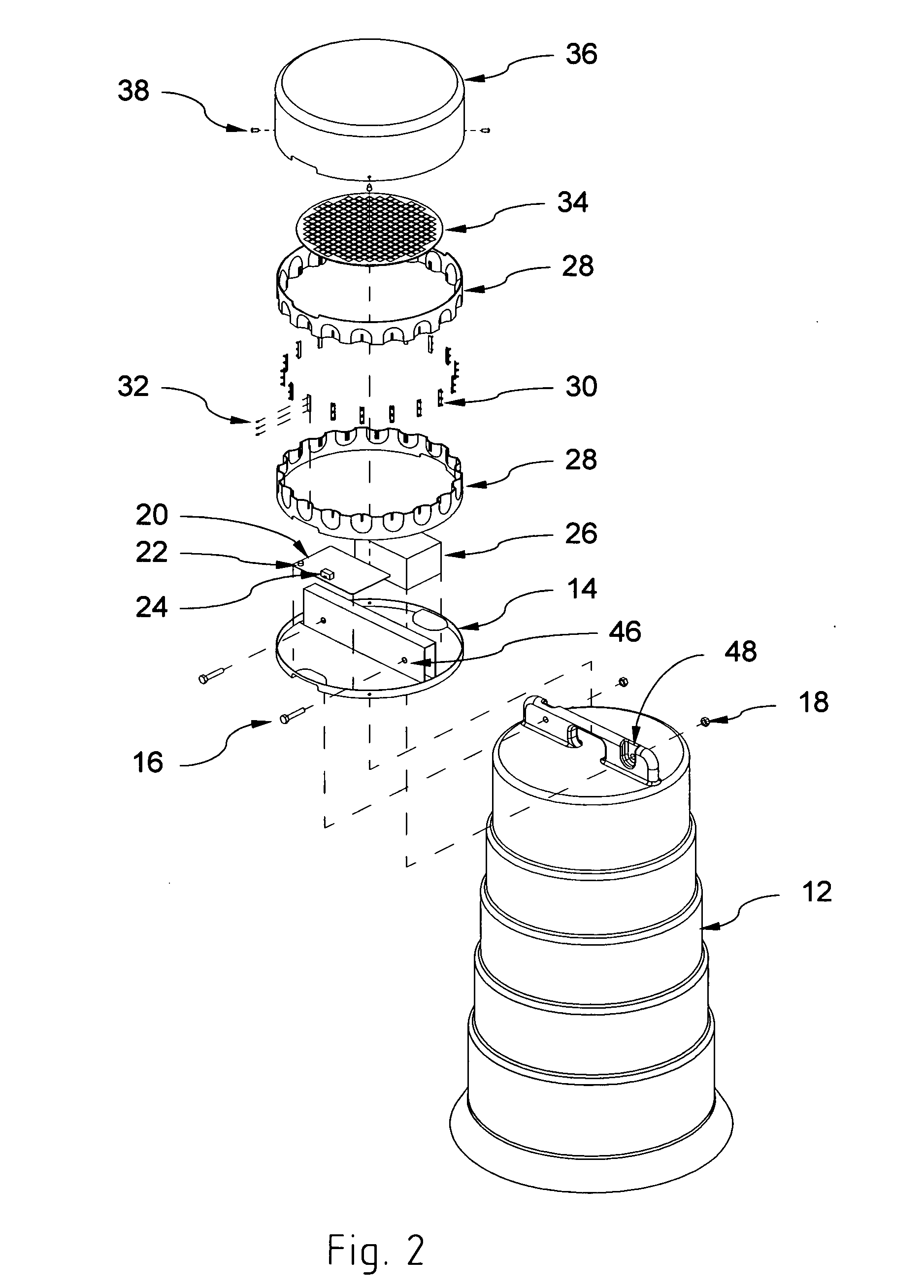Directional highway buoy
a technology for highways and buoys, applied in roads, constructions, road signs, etc., can solve the problems of increasing maintenance costs, increasing maintenance costs, and increasing the risk of maintenance workers in active construction zones, so as to increase visibility and operational life. the effect of the life span
- Summary
- Abstract
- Description
- Claims
- Application Information
AI Technical Summary
Benefits of technology
Problems solved by technology
Method used
Image
Examples
Embodiment Construction
[0032]FIG. 1 is a perspective view of a directional highway buoy 10 as installed on a common traffic channelizer 12.
[0033]FIG. 2 is an exploded view of a directional highway buoy 10 showing its internal arrangements and illustrating optional mounting method to a common traffic channelizer 12. The base 14 is generally circular or disk shaped, being of similar size and shape as the top of a traffic channelizer 12. The base 14 may be made from a single component, or may be made of several individual parts suitably fastened, welded or glued together. The base 14 may be made from plastic, metal, or any suitable material. A fastener 16 is passed through a hole 46 in the base 14 and a mount hole 48 in the traffic channelizer 12, and is secured with a nut 18, to retain the base 14 to the traffic channelizer 12. The base 14 provides support and retains the controller 20, battery 26, reflector ring 28, solar cell 34 and cover 36.
[0034] The selector switch 24 and photoresistor 22 may be atta...
PUM
 Login to View More
Login to View More Abstract
Description
Claims
Application Information
 Login to View More
Login to View More - R&D
- Intellectual Property
- Life Sciences
- Materials
- Tech Scout
- Unparalleled Data Quality
- Higher Quality Content
- 60% Fewer Hallucinations
Browse by: Latest US Patents, China's latest patents, Technical Efficacy Thesaurus, Application Domain, Technology Topic, Popular Technical Reports.
© 2025 PatSnap. All rights reserved.Legal|Privacy policy|Modern Slavery Act Transparency Statement|Sitemap|About US| Contact US: help@patsnap.com



